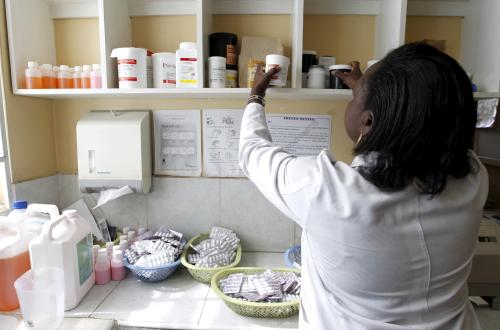We recently published a new article, “Change of pace: Accelerations and advances during the Millennium Development Goal era,” in the academic journal World Development. The paper assesses a cross section of key indicators to compare trends before and after the start of the Millennium Development Goals (MDGs), the internationally-agreed anti-poverty targets for 2015. Using a combination of empirical assessments, the article aims to determine which trajectories changed where, and to what scale of human consequence. The results slightly update those from our Brookings working paper published last year, taking advantage of official data released over the course of 2017.
Some key findings include:
- Low-income countries and sub-Saharan African countries registered positive acceleration on a majority of the indicators assessed and accounted for much of the world’s post-2000 accelerations.
- Middle-income countries typically registered larger cumulative gains than low-income countries but had less acceleration overall.
- 20.9 million to 30.3 million additional lives were saved due to accelerated rates of progress above previous trajectories, with sub-Saharan Africa accounting for approximately two-thirds of the total.
- Faster progress on primary school completion led to at least 74 million more children finishing primary school compared to business-as-usual trajectories.
- Undernourishment, access to water, and access to sanitation showed mixed patterns of acceleration; extreme income poverty declined at a faster rate; and environmental indicators had no systematic evidence of faster progress.
Accounting for lives saved
The total estimated number of lives saved is based on child deaths, maternal deaths, HIV/AIDS deaths, and tuberculosis deaths not attributed to HIV. Children accounted for the largest number of lives saved—an estimated 9.7 million to 18.7 million overall. Figure 1 illustrates the gains. The top dotted line shows “Counterfactual A,” which extrapolates each developing country’s average child mortality trend from 1990 to 2000. The next dotted line shows “Counterfactual B,” based on corresponding trends from 1996 to 2001. The solid line then represents the actual reported number of child deaths per year. The red line at the bottom shows the scenario if all countries had met the relevant MDG target by 2015: An additional 8.8 million lives would have been saved.
Figure 1: Total deaths in children under-5 compared to business-as-usual trajectories, developing countries
Among the other calculations, progress on HIV/AIDS accounted for the second-largest number of lives saved, at 7.7 million, followed by tuberculosis at roughly 3.2 million. (Note that we consciously seek to avoid double counting, with an adjustment for child mortality and HIV/AIDS numbers in particular.) Improvements in maternal mortality led to an estimated 400,000 to 657,000 additional lives saved. Across health indicators, the majority of incremental lives saved occurred in sub-Saharan Africa and low-income countries, even when excluding India.
Keeping up the pace
Our paper aims to clarify where patterns of progress did and did not change during the MDG era. In so doing, we hope it helps establish boundaries for future research on why some patterns shifted while others did not. In turn, this can inform thinking on where further changes of pace are required to achieve a new generation of Sustainable Development Goal (SDG) targets.
In a separate new forward-looking paper, we estimate that nearly 12 million children’s and mothers’ lives depend on meeting the relevant 2030 targets, compared to todays’ business-as-usual trajectories. The SDG ambition to “leave no one behind” implies a new round of breakthroughs are necessary. The MDG history shows that current trends need not persist.









Commentary
Taking stock (once more) of the Millennium Development Goal era
March 5, 2018